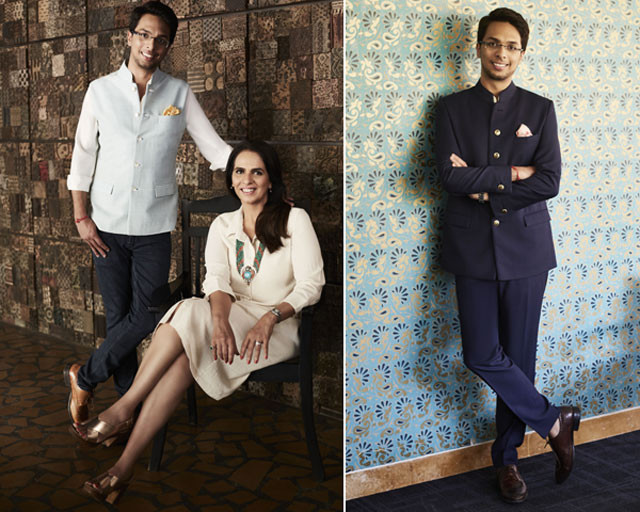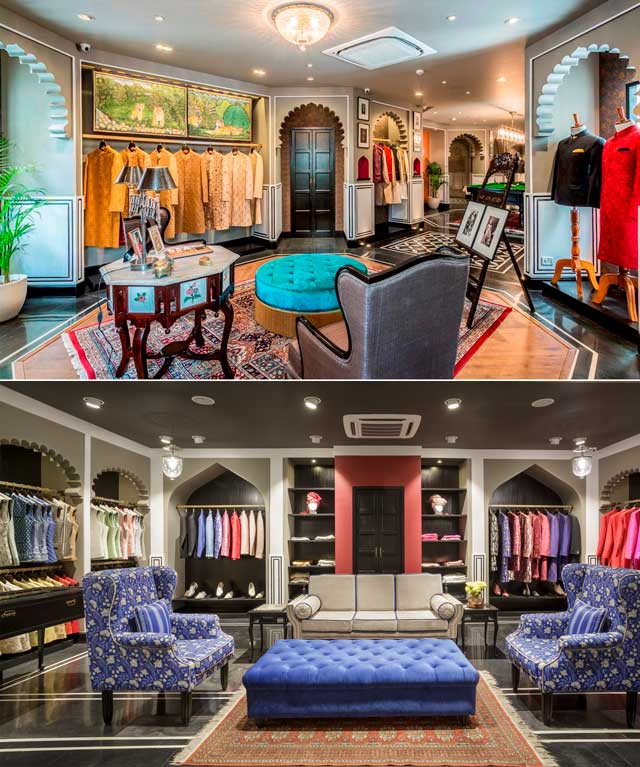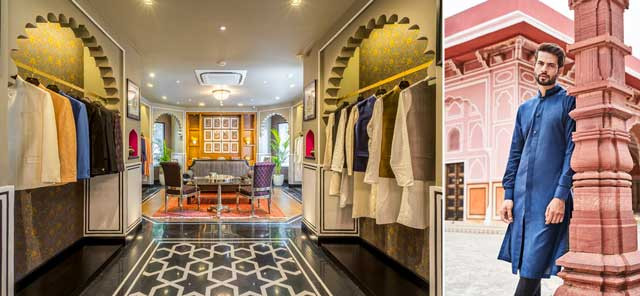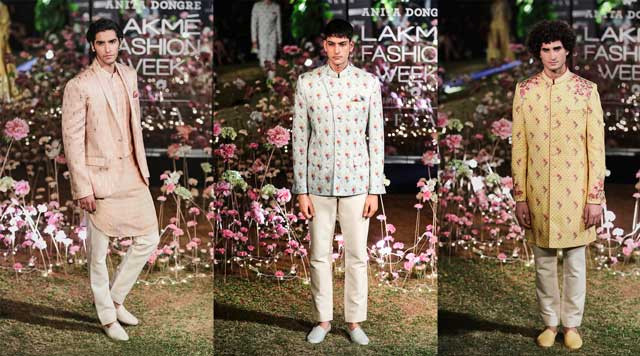
What do you bring to a brand that is already the benchmark for success in Indian fashion?” When Yash Dongre joined his mother, Anita Dongre’s eponymous label as the business head, this was the one question he asked himself. House Of Anita Dongre (HOAD) has always been a family-run enterprise. In the ’90s when the three siblings—Anita Dongre, Mukesh Sawlani, Meena Sehra—started this venture with just two sewing machines, everybody took up different aspects of the business and played to their strengths. This meant the siblings contributed evenly in the success of India’s largest fashion conglomerate.
Almost 20 years later, HOAD has five brands under its umbrella—AND, Global Desi, its bridal line under label Anita Dongre, jewellery brand Pinkcity, and the sustainable label, Grassroot. When the young scion was given a seat at the table, he knew he had to earn it. And two years ago, he made HOAD the first and only Indian designer brand to have a standalone bricks-and-mortar store in SoHo, Manhattan, New York, commencing the global journey he envisioned for the label. In a conversation with Femina, he talks about his role in the enterprise, what’s next for the brand, post-COVID-19, and how fashion needs to reassess its moves. Over to him:

You’re the business head of the biggest fashion house in India. Was it always a part of your career plan?
I completed most of my education in Mumbai, so I grew up around the business. Even during my school and college days, I used to spend a lot of time in office, so I never really had a backup career plan besides this. This business was something I was always interested in, especially the marketing side of it. This led me to earn a degree in international marketing from Hult International Business School, Boston. I didn’t just take it up because it was my family business, it felt like a natural progression.
Design houses often don’t run on a strict business module in India. Do you think that’s what sets HOAD apart?
Despite it being a family-run business, everyone in charge was exceptionally professional about their roles in the company. My mom handled the creative aspects, my uncle Mukesh handled the finances, and my aunt Meena looked after the sourcing and production department. I’ve noticed that this isn’t a norm amongst a lot of family-run ventures; they don’t implement a structure and tend to run it more like a mom-and-pop shop. Fortunately, we implemented a corporate regime very early on, and that has helped us grow—not just as a design house, but as a business. This growth eventually allowed us to introduce foreign funding to our brand, and enabled us to bring in senior management to look after the financial aspects; we were amongst the first to do something like this.

As a business head, what are the practical changes that you’ve brought to the brand?
I’ve been more curious about the marketing and business side of the company, so I knew where I had to invest my energy. I wanted to make the brand international, so three years ago I moved to New York and worked towards opening our first ever flagship store that is now up and running. I always knew I needed to add value to this already successful business, and as the second generation, I didn’t just want to be a part of the organisation because I was born into it. I had to take on some big responsibilities and prove myself as a worthy successor. Since New York was a new chapter, it gave me the perfect opportunity to prove myself and build our international presence from scratch. When I managed to do that, it helped me understand the entire business from a different perspective. I always knew there was an affluent South Asian community in the US that wanted to consume the latest Indian fashion but had no immediate access to it. I take extreme pride in the fact that ours was the first Indian designer store in SoHo, and is present amongst some of the world’s leading fashion brands.
Over the years, HOAD has also grown in the space of men’s fashion. Will there ever be a separate line for it?
The men’s collections have always been an extension of our main bespoke brand, and it will remain to be that. While designing our menswear collections, what we realised was that there was a void in the market for understated and chic styles when it came to men’s traditional or fusion wear. Everything that existed tilted towards the more-is-more aesthetic, and we knew there was a large population of men who were minimalists. Moreover, men aren’t very comfortable shopping for ethnic wear in general, so the idea was to make the groom/groomsmen comfortable by offering them choices that were classic, yet modern. Our creations are a stark contrast from the regular cookie-cutter style, heavily embellished sherwanis, kurtas, and bandhgalas that you will generally find.

How would you describe your personal style?
My personal style is minimal-chic; I am always drawn to old-school classics. My staple is a bandhgala (waistcoat/Nehru jacket), layered over a shirt; it’s something that’s versatile and pairs well with denim as well as tailored trousers (for when you have to sit in on meetings or rush for a dinner party that calls for semi-formal attire). I don’t like to experiment too much, so this is my go-to formula when it comes to dressing up. For those who don’t like to wear a tie, this is akin to a three-piece suit.
Due to the current pandemic, businesses are taking a huge hit. What are some measures that companies should take to survive this economic downfall?
For us, the biggest learning has been about cost control. When things are going well, we tend to neglect the little things that eventually add up to larger costs. You end up over-hiring and over-expanding. Now we have understood that it’s about running a leaner and tighter business, not spending money where it’s not required. That is the only way to survive the next six to eight months. The hope is that by the beginning of next year, the business will rise l. Till then, it’s about remaining afloat and taking care of your company and your employees.

What is the one piece of advice you would like to share with young entrepreneurs who are starting out?
For people who are just starting out or have just started out before the pandemic, I would advise them to look at this phase as an advantage. We have over 2,000 employees on our payroll, so managing their salaries, paying rent, and managing inventory can be extremely difficult to handle under these circumstances if you don’t have your finances in order or a contingency plan. However, if you’re at the helm of a small venture, you can view all the challenges that bigger companies are currently facing, and learn from their mistakes. Moreover, now is the time to think of tomorrow, and how you can scale up your business by adapting and reinventing your strategy to fit a sustainable module that is diligent about cost-saving.
What’s next for fashion, post COVID-19?
Considering disposable incomes have significantly diminished, brands will start making value lines since consumers will not splurge on luxury items. Fortunately for us, we’ve always had a ready-to-wear line which is much more affordable. I believe that more couture designers will soon launch prêt collections. Even the marketing sphere will change, lavish spends on fashion shows, big events, and exhibitions will see a massive cut down. A lot of these physical marketing strategies will convert to digital-first as we are currently witnessing, and this will stay for the long haul. For the foreseeable future, lavish fashion campaigns will not be viable; brands will now try to be creative on a budget and there will be consolidation when it comes to spending.
Photograph: Provided by PR
Also read: Sabyasachi On His roots, Becoming A Conglomerate And His Purist Aesthetic
Next Story